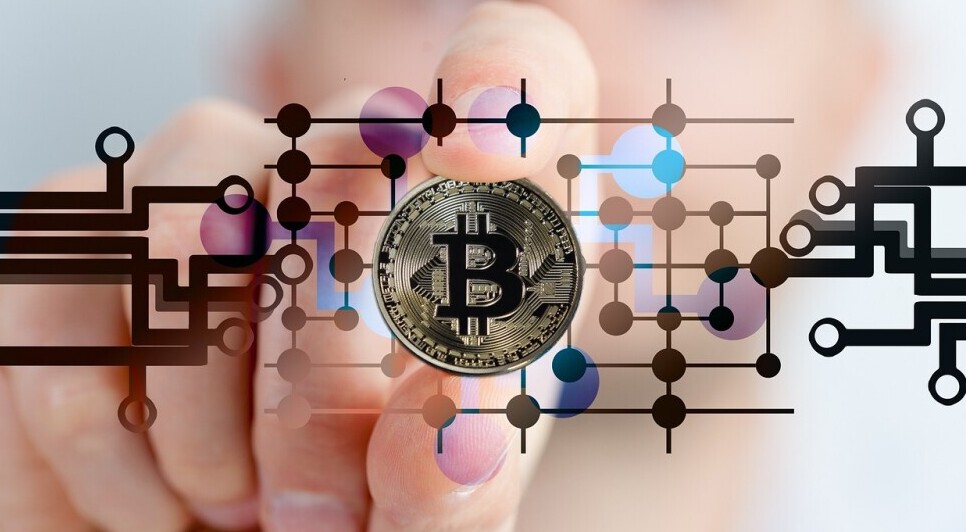Step By Step Guide To Investing In Cryptocurrency
Cryptocurrency is like the wild west of the financial world, filled with possibility and risk. So what exactly is it? At its core, cryptocurrency is a type of digital or virtual money that relies on cryptography for security. You can’t touch or feel it like the dollars in your wallet, but it’s very much real in the digital realm.

Now, you might be wondering, why jump into this digital tidal wave? Well, cryptocurrencies have been around since Satoshi Nakamoto dropped Bitcoin into our laps back in 2009. Since then, they’ve promised big returns and provided a decentralised alternative to traditional banks. If you’re after capital gains and want to diversify beyond stocks and bonds, this might be a space to explore.
Like any investment, putting your cash in crypto isn’t just rainbows and unicorns. It’s volatile and unpredictable, which means there’s a chance for big rewards, but also big losses. Market swings can be intense, so it’s vital to keep your feet on the ground and your eyes wide open.
Before you click ‘buy,’ it’s crucial to know what you’re getting into and set some cool-headed goals. That Lamborghini might sound tempting, but start with realistic targets. Invest what you’re willing to lose and view this as part of a broader financial strategy, not your golden ticket to instant riches.
Whether you’re in it for the tech, the philosophy, or the potential for some solid gains, understanding the basics is your first stop on this journey. Keep your ears to the ground and stay informed, because in the world of crypto, knowledge truly is power.
Choosing the Right Cryptocurrency Exchange
Navigating the realm of cryptocurrency exchanges can feel like shopping for a new phone. With so many options, each with its own perks and quirks, it can be a lot to take in. But don’t sweat it—I’ll help break it down for you.
First off, a cryptocurrency exchange is a digital marketplace where you can swap your dollars for Bitcoin, Ethereum, or even that shiny new altcoin everyone’s buzzing about. Think of it as the bridge between you and your crypto assets.
When you’re picking an exchange, you want to look for trustworthiness and ease of use. Big names such as Kucoin aren’t just popular—they’re also recognised for their security and extensive lists of tradable currencies. They make it relatively painless for rookies to sign up and start trading.
How do you get started? It’s pretty straightforward. Set up your account by providing some basic info and verifying your identity. This usually means uploading a government-issued ID—it’s all about keeping transactions legit and secure.
Security should be a top priority. Enable two-factor authentication (2FA) to add an extra layer of protection to your account. It’s like that double-lock system on a vault—you’d want as much security as possible when dealing with your finances.
Lastly, don’t forget to skim through the fee structures of each platform. Fees can vary significantly between exchanges, from flat fees per transaction to percentage-based charges. Understanding these costs up front can help you dodge any unwanted surprises in your crypto journey.
Setting Up Your Digital Wallet
Picture your digital wallet as the electronic equivalent of your leather wallet, minus the old receipts and mismatched bills. It’s where your cryptos chill out, waiting for you to decide their next big move.
So, how do you get one of these digital wallets? There are plenty of options out there. You can download apps like MetaMask right to your phone or computer—super handy, right? These are called hot wallets, and they’re great for quick access and transactions.
But before you start loading it up like a kid in a candy store, let’s chat types. You’ve got hot wallets for everyday use and cold storage if you want to sleep easy knowing your assets are locked up tight, far away from online threats.
Transferring crypto into your wallet might sound techy, but it’s pretty much a copy-paste kind of deal. You’d snag your wallet’s address—a string of letters and numbers—and use it on the exchange site where you bought your crypto. Think of it like sharing your email to get concert tickets sent to you, only here you’re sending your hard-earned coins to safety.
And hey, let’s keep those bad vibes away. Protect your wallet with a hard-to-guess password and consider backing it up somewhere secure. It’s not Fort Knox, but keeping it safe from hackers really makes for a better night’s sleep.
Diving into Popular Cryptocurrencies
If you’re looking to explore the stars of the crypto world, Bitcoin, Ethereum, and Solana are the MVPs you want to get familiar with. Each one brings something unique to the table.
Bitcoin started it all. It’s the OG of cryptocurrencies and represents the idea of a decentralised currency better than anything else. Think of it as digital gold. Buying Bitcoin is almost like a rite of passage when you’re getting into crypto. You can snag some by using popular exchanges like Kucoin or Coinbase and transferring it to your digital wallet for safekeeping.
Ethereum is all about versatility. Beyond being a digital currency, its blockchain supports smart contracts and decentralised apps (DApps). That means it’s not just about passing coins back and forth—it’s about building whole new systems. Setting up an Ethereum wallet like MetaMask lets you participate in its ecosystem, from DeFi projects to NFT marketplaces.
Then there’s Solana, the speedster of the crypto galaxy. With its high throughput and low fees, Solana’s making waves for enabling rapid-fire transactions. To join in, you’ll need a wallet that supports Solana, like Phantom. These wallets let you buy, store, and interact with Solana-based projects easily.
When buying these coins, the process is pretty standard—you’d use your crypto exchange account to purchase using fiat or trade for other cryptos. It’s all about figuring out your goals and what each currency can offer you in the long run.
Navigating through these options might seem complicated at first, but once you get the hang of setting up those ecosystem wallets, you’ll see the potential they unlock.
Securing Your Cryptocurrency Investments
When it comes to safeguarding your crypto stash, think of it like locking up a valuable collection. You wouldn’t just leave it lying around, right? One of the safest options out there is a cold storage wallet, perfect for keeping your precious assets out of hackers’ reach.
Cold wallets, like hardware wallets, disconnect your crypto from the internet, making them immune to online threats. Brands like Ledger and Ellipal stand out for their security and ease of use. Setting up one of these wallets might take a bit more effort than their online counterparts, but the peace of mind is worth it.
Here’s the scoop: once you’ve purchased your hardware wallet, follow the setup instructions to create a secure PIN and passphrase. These will act as your last line of defence if your wallet ever lands in the wrong hands.
Risk management isn’t just about where you store your crypto. It’s also about staying alert to the ever-changing market. Keeping up with trends and news can help you make informed decisions and avert potential losses. GoTradeCrypto is here to help you every step of the way!
And remember, diversification is key. Don’t put all your eggs—or coins—in one basket. Spread your investments across different cryptocurrencies to mitigate risk and maximise your potential for returns. It’s all about playing the long game and staying one step ahead.
Sign up for further updates
The information provided in this blog is for educational and informational purposes only. Cryptocurrency and meme coins are highly volatile and speculative investments that carry substantial risks. Nothing within this blog constitutes financial advice. We strongly encourage you to conduct your own research (DYOR) before making any investment decisions. Always invest wisely and never invest more than you can afford to lose.














4 Responses
Great article! Really breaks down the complexities of crypto in a way that’s approachable.
I especially liked the comparison of a digital wallet to a physical one; it makes the concept much more relatable.
One thing I’m curious about—how do you recommend keeping up with the latest trends and news in crypto?
Would love to hear your thoughts on that. Thanks for the insight!
Thank you so much for your kind words! I’m glad to hear that the comparison resonated with you. To stay updated on the latest trends and news in crypto, I recommend following reputable news websites like CoinDesk or CoinTelegraph, subscribing to newsletters from industry experts, and joining online forums or social media groups focused on crypto discussions – signed up to our webpage will also aid your journey. Engaging with the community and diversifying your sources can also provide valuable insights. I appreciate your interest and hope you find these suggestions helpful!
Crypto currencies can be a very complex field, with many people not knowing where to start or how to set it up. With this guide you have broken down the complexitoes in an easy to undetstand manner.
Currently i have invested in an Ethereum ETF, which is on a standard stock exchange. But I have been contemplating in investing in actual cryptos as well, so will be bookmarking this page to refer back when I have done more research on which crypto currency or basket of cryptos is best for me. It would be interesting to know if there is a basket of crypto available, rather than buying individual ones.
Thank you for your insightful review! I am glad to hear that the guide made the complexities of cryptocurrencies more accessible for you. Investing in an Ethereum ETF is a great start, and I appreciate your thoughtfulness about exploring actual cryptocurrencies. Ethereum is like the Microsoft of the Crypto world as many businesses will build on top of its technology as time elapses.
Regarding your interest in a basket of cryptos, there are indeed options like crypto index funds and ETFs that bundle multiple cryptocurrencies together, which can simplify your investment process. We would recommend a ‘barbell strategy’ whereby you split your portfolio between low-risk assets such as Bitcoin, Ethereum and Solana and higher risk assets, with lower market caps and embryonic in terms of its development. We are of the opinion that people invest in individual coins as you have more control and access via liquidity quicker this way. We are always making recommendations here on GoTradeCrypto, so please feel free to sign up for future updates. We will be publishing our portfolio in due course too, exciting times! Best of luck with your research, and feel free to revisit the guide as you delve deeper into the crypto world! We are always here to help.
KR
Nikki